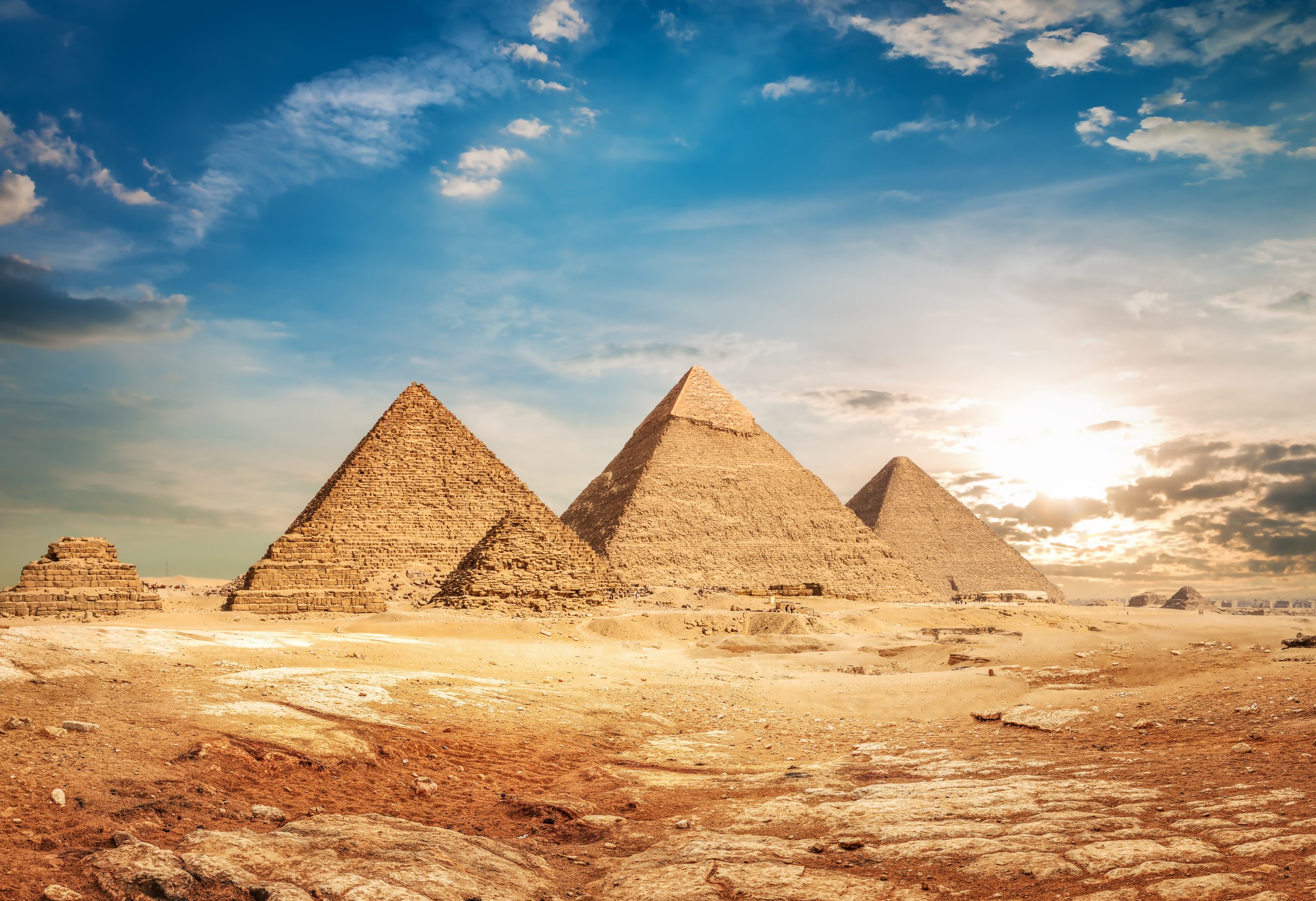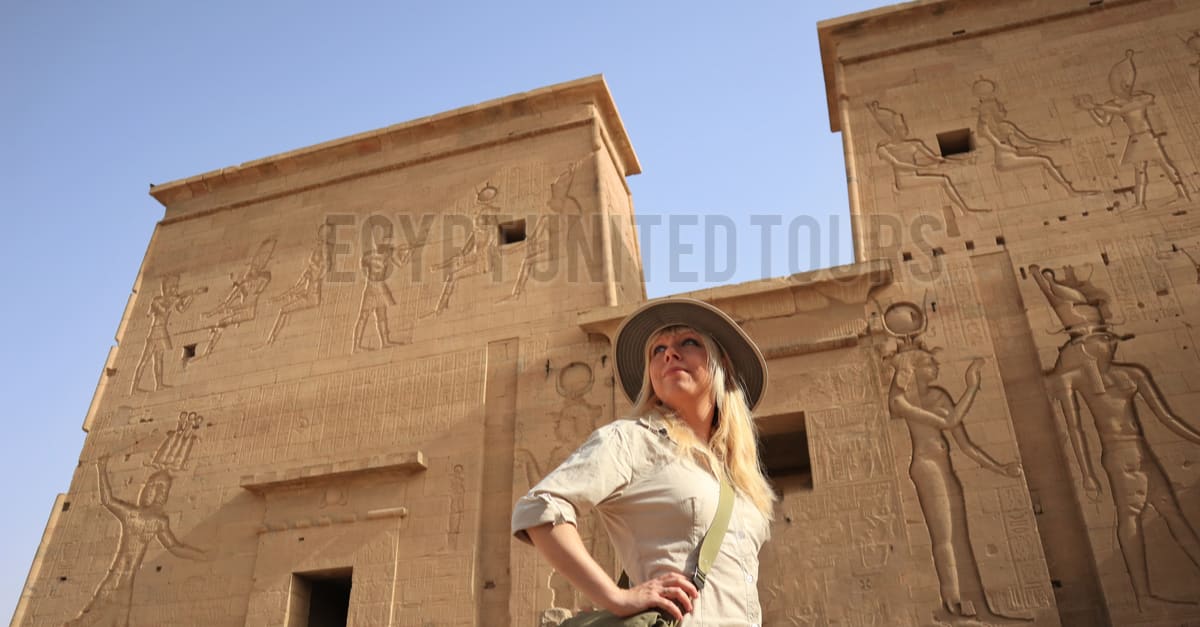The Ancient Egyptian Pyramids| Facts, Inside, History, and Location: The Wonders That Immortalized Pharaonic History In Egypt.
The ancient Egyptian pyramids are the most famous examples of the architectural art of the late prehistoric period, and they are the largest funerary monuments and tombs in the world.
Historic tombs bear the names of the kings. They were an integral part of ancient Egyptian heritage. They have been a focus of interest for researchers and the debate of historians since their discovery. The pyramids are a very important tourist attraction in Egypt. They are one of the Seven Wonders of the ancient World.
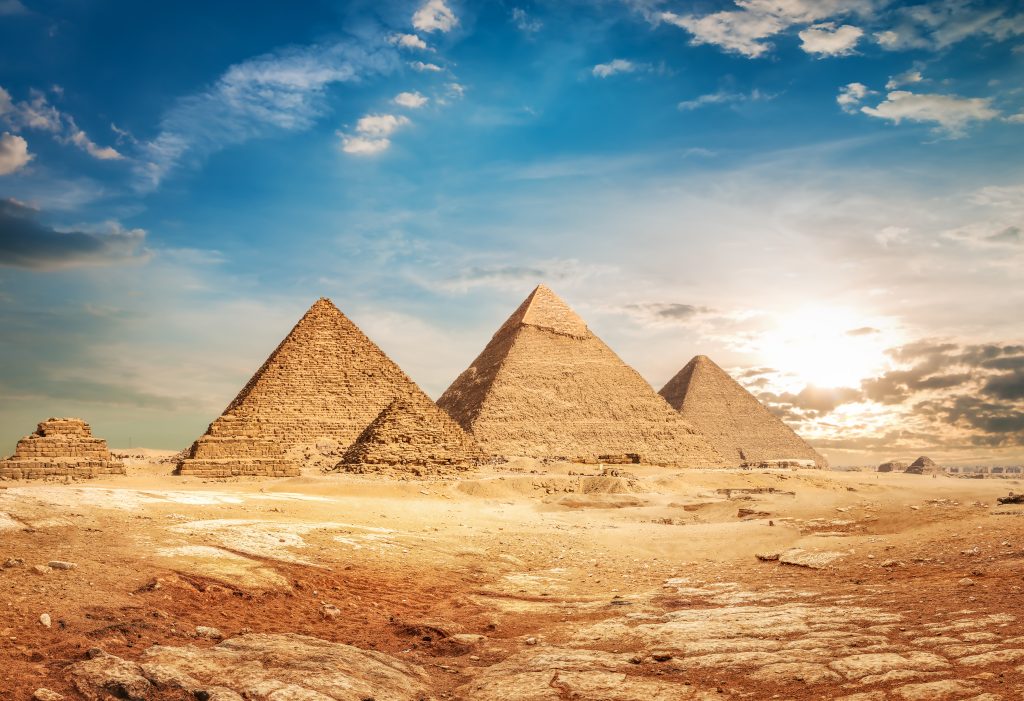
The Ancient Egyptian Pyramids
The ancient kings and queens believed in the afterlife, and the pyramids protected their bodies after death. Each pyramid contained its notes, murals, jewelry, and other types of ancient art.
Where did the ancient pyramid shape come from?
The ancient Egyptians lived in an agricultural society. They watched the sun rise and set every day and watched the moon crack and wane. They also watched the floodwaters flood their fields every year.
As the floodwaters receded, they noticed that the higher peaks of land from the water would begin to grow new life. They thought a mound of earth was the source of new life emerging from the water.
When they worshipped in their temples, they sometimes considered a mound of earth as the beginning of life. Sometimes this was a mound of dirt or sand, and after a while, it began to permanently develop into a single mass of stone.
The stone became a small pyramid shape. Thus, the pyramid shape was the idea of new life for the ancient Egyptians, emerging from the water and the earth, and flourishing in the light and warmth of the sun. These ancient Egyptians believed that death was not the end, but the beginning of a new life in a new way. Therefore, the dead were west of the Nile River, where the sun sets each day. The pyramids were not simply monuments created to honor a deceased ruler. Instead, they were an instrument of resurrection and eternal life for the pharaoh.
Who Built The Ancient Egyptian Pyramids?

The pyramid builders were in Giza from all over Egypt. There appears to have been a permanent workforce of skilled workers. They lived with their families in a village establishment. The number of these workers in this village is unknown, but one estimate places the number at around 5,000.
There were many support services in this village, such as medical care for the workers. They discovered two bakeries, a fish market, a copper processing plant, and other industries.
Work on the Khufu Pyramid took approximately 20 years. There may have been an additional 20,000 workers in Giza outside the pyramid village, in temporary dwellings, perhaps for 3-4 months. These workers may have been forced to build the pyramid or have come to work voluntarily.
Many of the workers came during the period when the Nile flooded, making it impossible to cultivate the fields. These workers were paid wages. The standard ration for a worker was ten loaves of bread and a bottle of beer. Bread could be used for barter or exchange for other items, as there was no monetary system currently in place.
These workers also received a proper burial, including food containers placed beside them for use in the afterlife. These types of burials would not be for slaves.
What did the Egyptians build the ancient Pyramids from?
They used Limestone to build the foundations of the pyramids, and used the finest quality to build the outer layers of these pyramids. The Egyptians also used other materials, such as pink granite, which was used to build the interior walls, and basalt to build the floors. They also used Granite and basalt to build the pyramid’s summit, which was from gold.
Workers used various tools to break the blocks, such as picks, granite hammers, and copper chisels. After breaking them, the workers transported them to the construction sites by boat on the Nile or through a lubricated support. So they found a sculpture in an ancient tomb. It depicts a group of 173 men pulling stones using a lubricated support. They were then lifted to the top through brick ladders covered in wax.
The Ancient Egyptian Pyramids’ Location
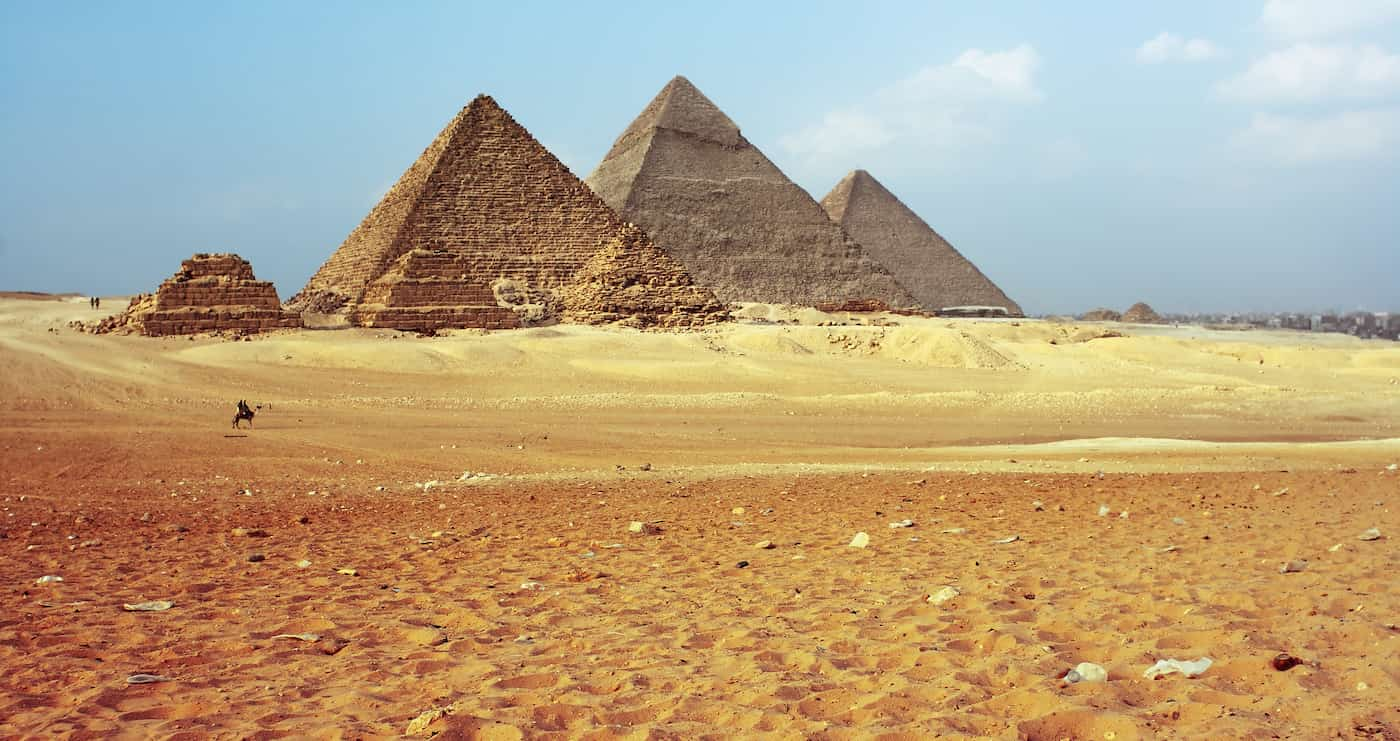
Egyptian Pyramids’ Location
There are more than 100 ancient pyramids in Egypt, but the most famous and largest are the three pyramids of Khufu, Khafre, and Menkaure. These pyramids are on the Giza Plateau in Giza Governorate, on the west bank of the Nile River, just 15 kilometers from central Cairo.
The ancient Egyptians believed that the western side symbolized the dead, as the sun sets there, so they designated it for their burials. The eastern side symbolized the living world, where they built their cities.
They were on high ground to prevent the Nile from flooding, and were near the river to facilitate the transport of limestone. A solid, rocky area of the desert plateau was also chosen for construction to provide support and protect them from collapse or cracking.
The Building of Ancient Egyptian Pyramids
There were many theories about the building of the pyramids, but Egyptologists said that the ancient Egyptians built them at the beginning of the Old Kingdom. The pharaohs of Egypt believed they would become gods after their death, so they built massive pyramidal temples and tombs for themselves. There was everything they needed in the afterlife in these tombs.
As for the Pyramids of Giza, the Egyptians built the largest of them during the reign of Pharaoh Khufu between 2551 and 2528 BC. They built others during the reigns of Khafre and Menkaure.
The pharaohs gradually stopped building during the New Kingdom, which lasted until 1070 BC. They chose the Valley of the Kings instead of the pyramids for their burials. Scholars also said that these were not isolated structures at that time, but rather part of an architectural complex.
Some researchers said that the “gods” built the pyramids, others attribute them to enslaved Jews, while others said that jinn, subjugated to serve the Prophet Solomon, built them. However, there isn’t any clear evidence to support these theories.
The Ancient Pyramids From Inside
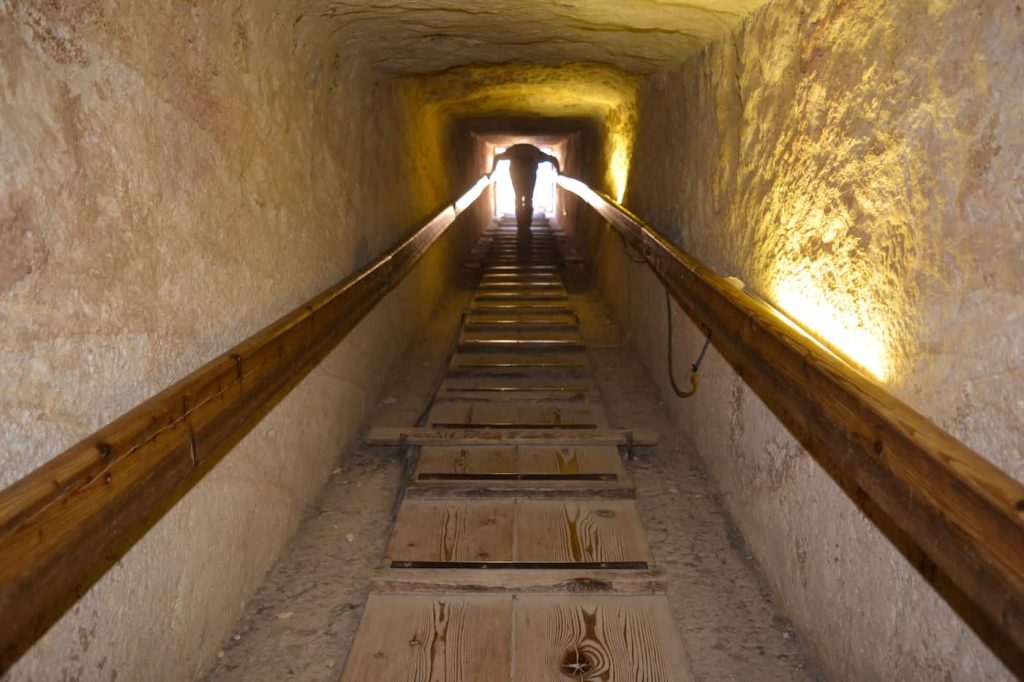
The Pyramids from Inside
Scientists have discovered aspects of the lives of the ancient Egyptians through the images, inscriptions, and hieroglyphic texts that existed on the walls of the pyramids. Some sculptures showed their construction process and the tools used.
The pyramids also contained treasures and precious jewelry that were in the coffins of kings. There were also chambers, passageways, decorated coffins, and the mummified limbs and bodies of pharaohs and nobles.
Contents Of The Ancient Egyptian Pyramids From The Inside
In the Great Pyramid, Many passages lead to the King’s Chamber. These passages start with a narrow passage, followed by a longer passage called the “Grand Pyramide”.
The King’s room in the Great Pyramid contains the king’s sarcophagus, a massive, floor-mounted granite coffin. Scientists believed that it was the king’s mummy.
The Pyramid of Khafre contains one burial chamber, in addition to a smaller room and two passages.
There is a funerary temple filled with statues of the king in the Khafra pyramid. It also contained more than 52 images.
The Menkaure Pyramid contains a room carved with ceramic panels, in addition to another room containing six large niches. The pyramid also contains a burial chamber lined with several massive granite blocks. The pyramid once housed a black stone sarcophagus carved on interlocking panels, but it was later transported to England.
The Menkaure Pyramid includes a valley temple and a funerary temple.
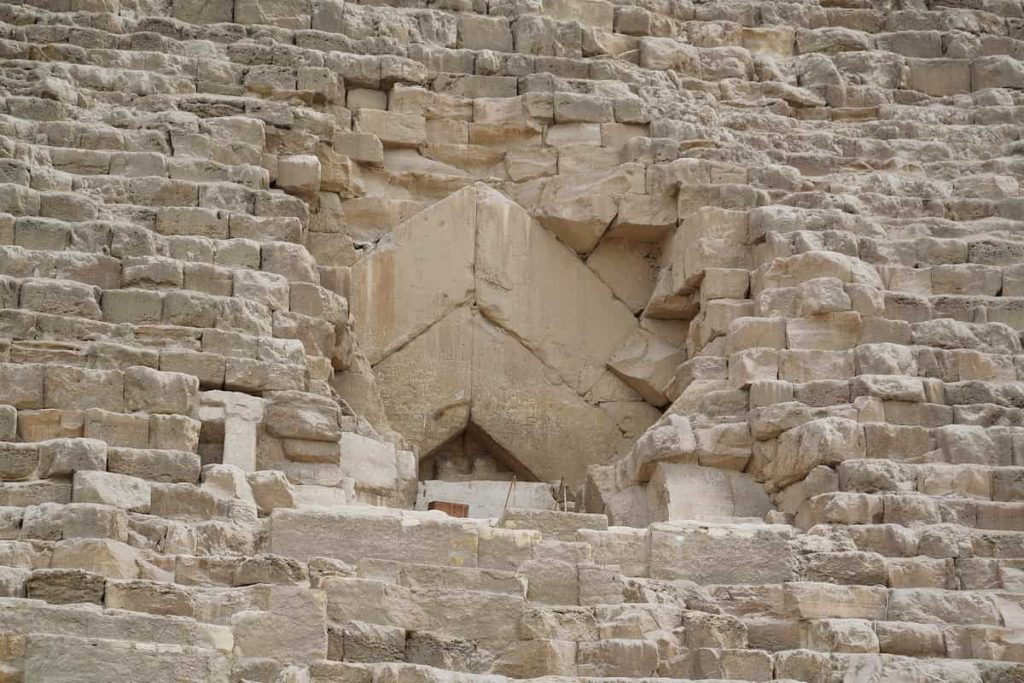
Pyramids Original Entrance
Number of the ancient Egyptian Pyramids:
A total of 118 pyramids stand as the most notable and largest ancient structures in Egypt, but the three Khufu, Khafre, and Menkaure pyramids remain the most famous.
Archaeologists have identified 118 pyramids as the total number of pyramids discovered.
The 2008 excavation of a buried pyramid near Saqqara led researchers to believe additional pyramids might exist, but they remain undiscovered to this day.
The Most Famous Pyramids In Egypt
1- The Khufu Pyramid:
The Khufu Pyramid stands as the biggest structure in the Giza complex. Archaeologists know this pyramid by two names: The Great Pyramid and Khufu stands as one of the Seven Wonders of the Ancient World. The Khufu pyramid functions as the burial site for the Pharaoh Khufu. According to historians, it took approximately 100,000 workers three months per year to finish constructing this pyramid during its three-month annual operation period.

The Great Pyramid of Giza (Pyramid of Cheops or Khufu)
by Jorge Lascar
The construction process required ten to twenty years to complete. The complex features multiple significant structures, including three royal wives’ pyramids and two mortuary temples, as well as a tiny pyramid and various small mastaba tombs surrounding the main structure.
The Khufu Pyramid stands as one of the world’s most recognized historical landmarks. The massive construction with its multiple internal features and measurement system is an incredible achievement.
The total area of the pyramid measures 2.3 million cubic meters without counting the internal rooms and stone foundation. The structure measures 227.5 meters across the base and stands at 137.2 meters tall while weighing about 6 million kilograms.
2- The Khafre Pyramid:
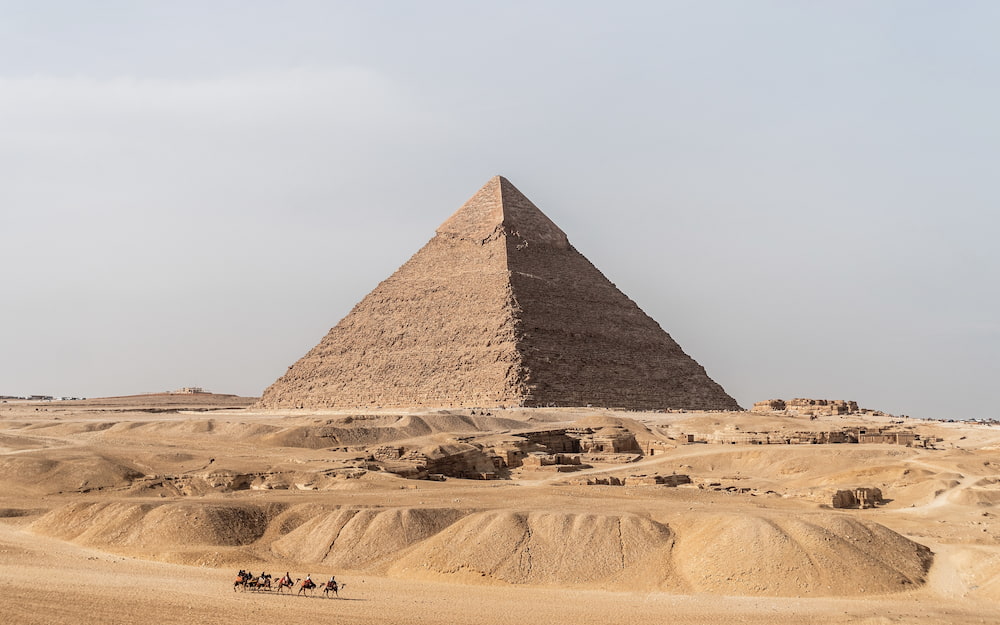
The Khafre Pyramid
The Khafre pyramid exists as the second biggest pyramid in Giza after the Khufu pyramid, which served as the burial site for Pharaoh Khafre.
The Khafre Pyramid gained its fame because it contains the Great Sphinx which exists outside its structure. The structure stands 160 meters southwest of the Great Pyramid with dimensions of 210.5 meters base and 135.5 meters height.
King Khufu’s pyramid seems larger than his father’s pyramid because it stood at a higher elevation. The top of the pyramid still maintains its external limestone structure, while the unique funerary temple design stands out from the eastern side of the pyramid.
3- The Menkaure Pyramid:
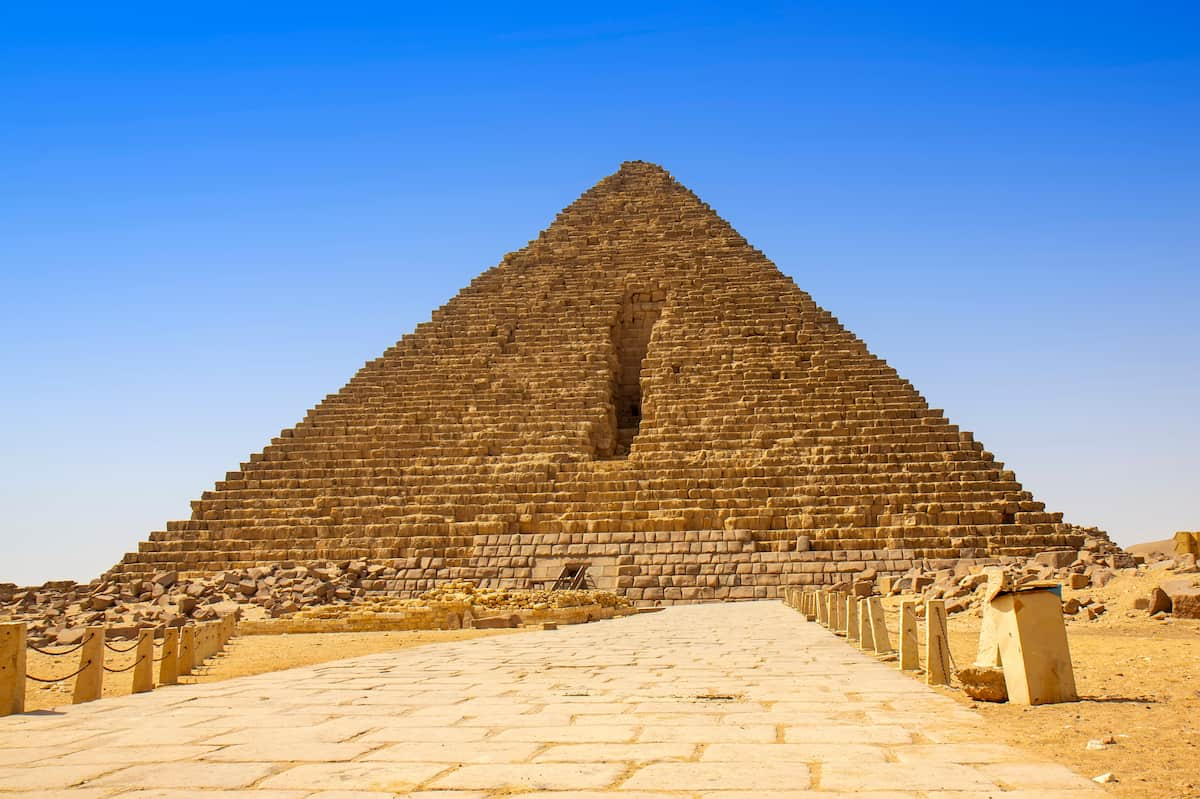
The Menkaure Pyramid
This is the third major pyramid of the Giza pyramids and was a tomb for Pharaoh Menkaure. It is the smallest of the three pyramids at Giza in terms of size, yet it is a massive structure, with a vertical height of 62 meters and a base measuring 108 meters.
The pyramid was of large limestone blocks. There are three smaller unfinished pyramids on the southern side of the pyramid, which serve as tombs for relatives of Pharaoh Menkaure.
4-The Step Pyramid Of King Djoser:
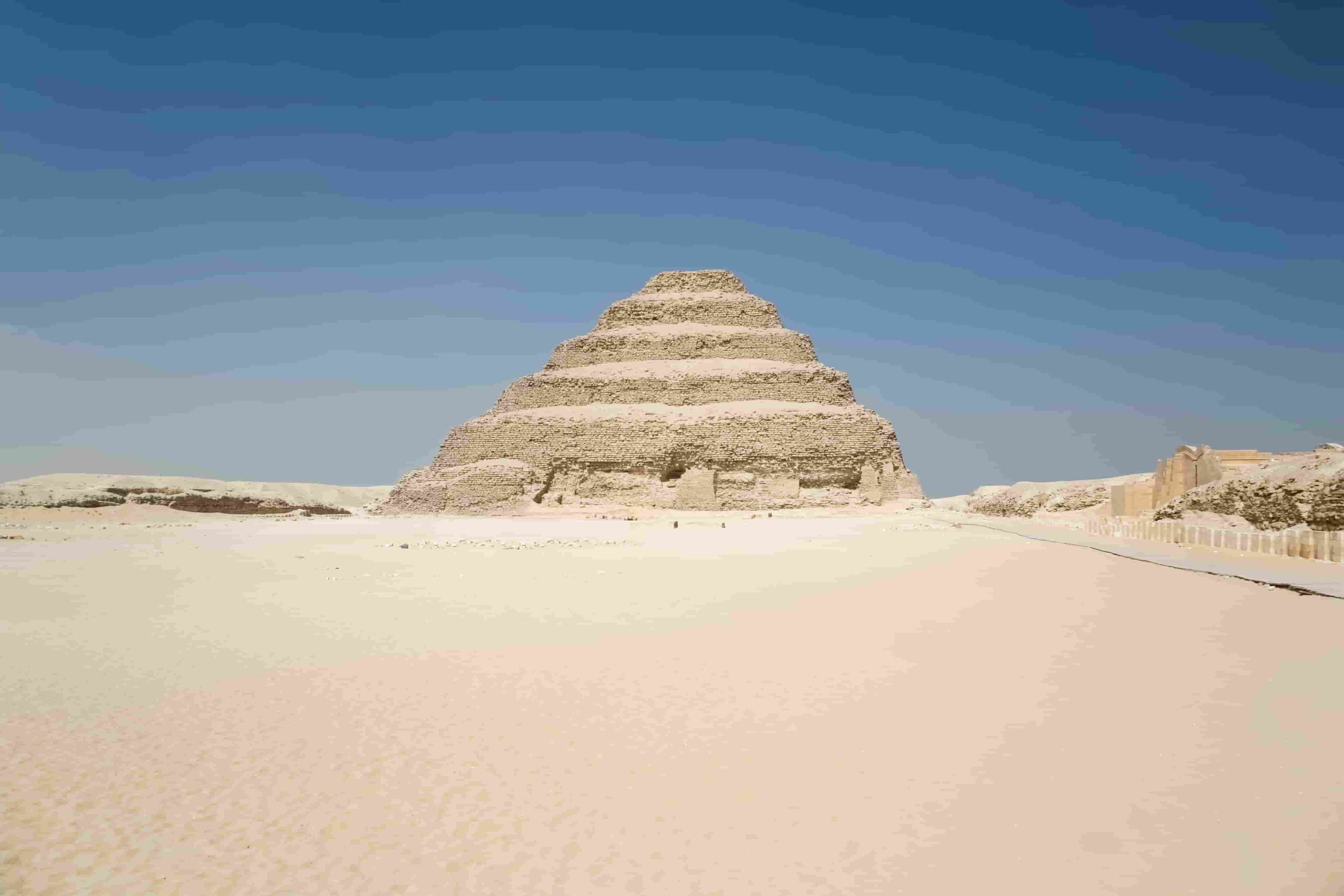
The Step Pyramid of King Djoser
The Pyramid of Djoser stands as the oldest structure in ancient Egypt. The Egyptians built it for the burial of Pharaoh Djoser in the 27th century BC from limestone.
It was northwest of the Egyptian city of Memphis, and the pyramid reaches a height of approximately 613 meters.
5-The Djedefre Pyramid:
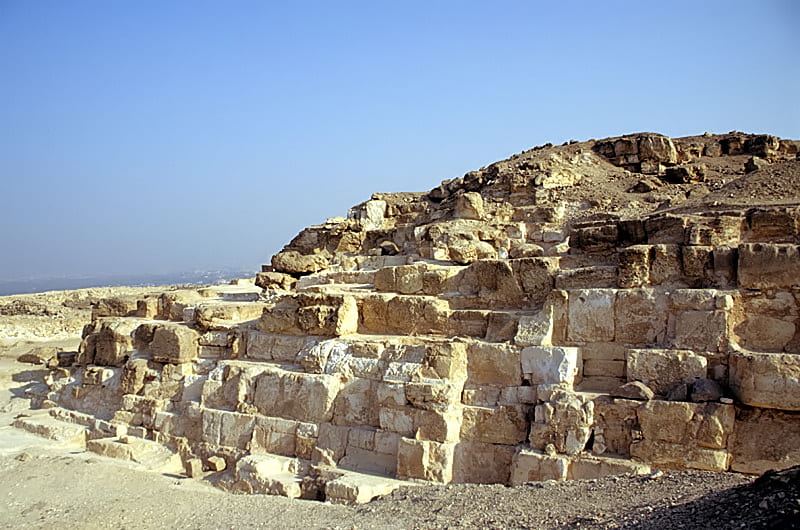
The Djedefre Pyramid
The Djedefre Pyramid stands in the Abu Rawash area, which positions it as the nearest pyramid to northern Egypt. The Egyptian ruler Djedefre, who followed Khufu to the throne, built this monument. The ancient Egyptian pyramid of Djedefre stood among the largest in its time, but only ancient ruins survive today.
Modern archaeologists confirm the pyramid was finished after ancient archaeologists believed it remained incomplete despite its size, which matched that of the Menkaure Pyramid at Giza. The Djedefre Pyramid received its name from its believed position as the most attractive structure among Egyptian pyramids because of its exterior walls made of polished granite and limestone.
Some historians attribute the destruction to the Roman Empire under Augustus Caesar because of its stunning appearance. The conquest of Egypt occurred after this event. The ancient name for he pyramid was “Djedefre’s Starry Sky”.
10 Facts That Reflect the Importance of the Ancient Egyptian Pyramids and Their Economic Impact
Some facts about the pyramids’ impact in all fields:
1-Royal Tombs:
The pyramids served as burial sites for kings and queens who received mummification procedures before being placed with valuable possessions to achieve eternal life in the afterlife.
2-Economic Impact
Tourism generates the most revenue for Egypt and stands as its leading source of national income. The tourism industry achieved its highest revenue in 2010 when it brought in $12.5 billion from 14.7 million visitors. The Central Bank of Egypt reported that tourism revenues generated $10.7 billion during the 2021-2022 fiscal year.
3-Wonders of the World
The Great Pyramid of Giza stands as one of the Seven Wonders of the Ancient World.
4-A Symbol of Power and Authority:
The pharaoh’s power and authority became visible through the construction of massive pyramids since such projects needed extensive resources and many workers.
5-Architectural Achievement:
The ancient Egyptians demonstrated their exceptional engineering and architectural abilities through the construction of the pyramids. The Egyptians constructed the pyramids through precise methods that utilized sophisticated construction techniques.
6-Religious Significance:
The pyramids had a religious impact on the ancient Egyptians’ religious beliefs about the afterlife and resurrection, as the ancient Egyptians believed to be gateways to the afterlife.
7-Cultural Significance:
The pyramids served as essential cultural artifacts that formed part of Egypt’s historical heritage. The structure demonstrated the distinctive architectural and artistic elements of that period.
8-A Symbol Of Eternity:
The pyramids have stood for thousands of years. Through time, the pyramids have evolved into eternal symbols that connect different historical periods.
9-A Source Of Inspiration:
The pyramids continue as an inspiration for artists and architects worldwide since their construction. The pyramids have evolved into a primary tourist spot in Egypt.
10-A Tourist Destination:
Tourists from all over the world visit the pyramids, which have become Egypt’s leading tourist attraction. The architectural masterpieces attract visitors from all parts of the world.
Conclusion
The ancient Egyptian pyramids are an important treasure. Moreover, they have secrets and stories.The Egyptian pyramids are among the largest ancient buildings . They are powerful symbols of ancient Egyptian civilization. the ancient Egyptians builtthe Egyptian pyramids.
The pyramids are tourist attractions that have held a significant place in history throughout the ages. Many tourists are visiting them regularly. The state is always developing the pyramids area to preserve this great heritage and because it is a tourist attraction.

